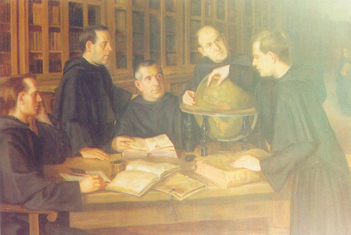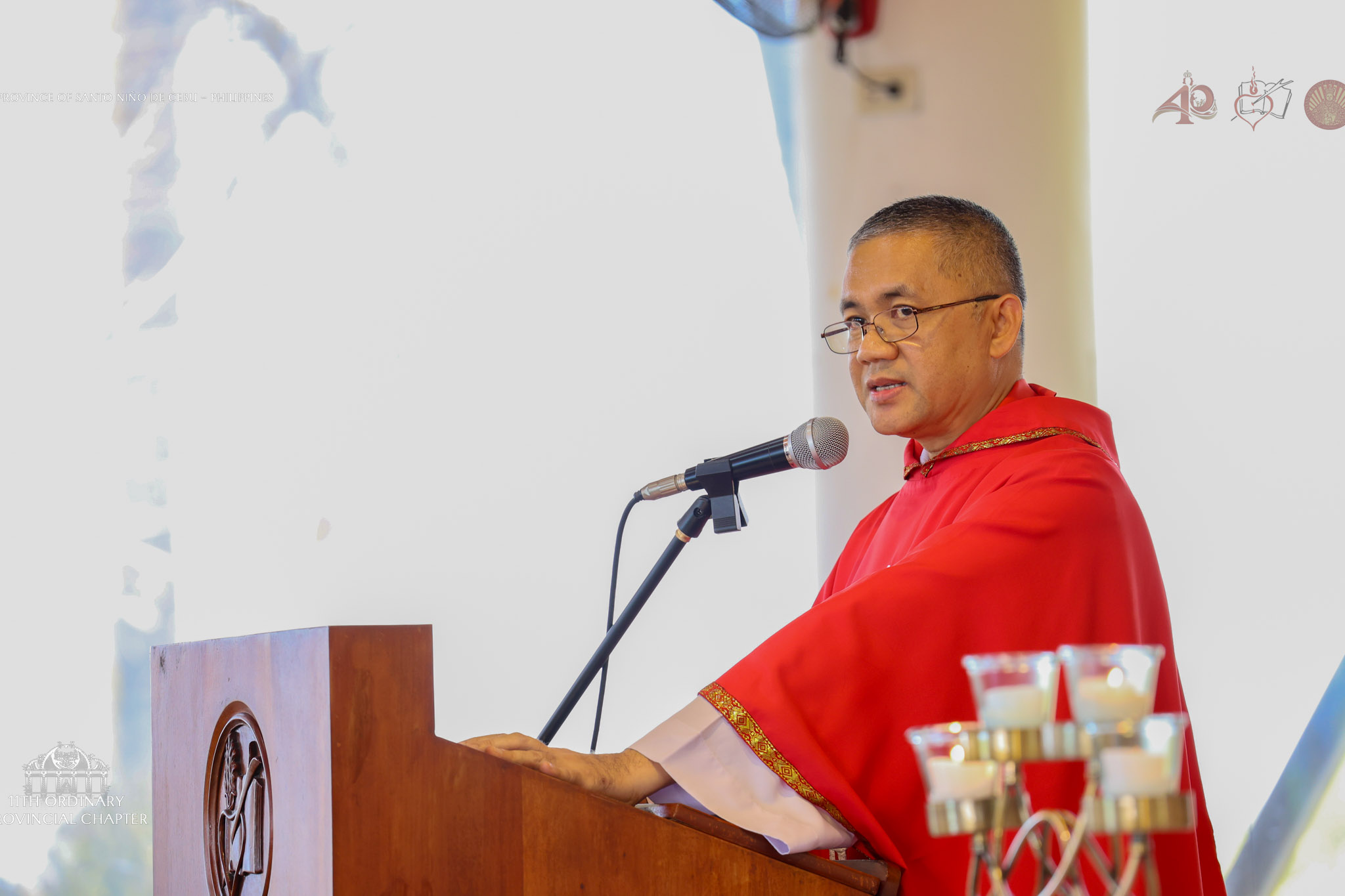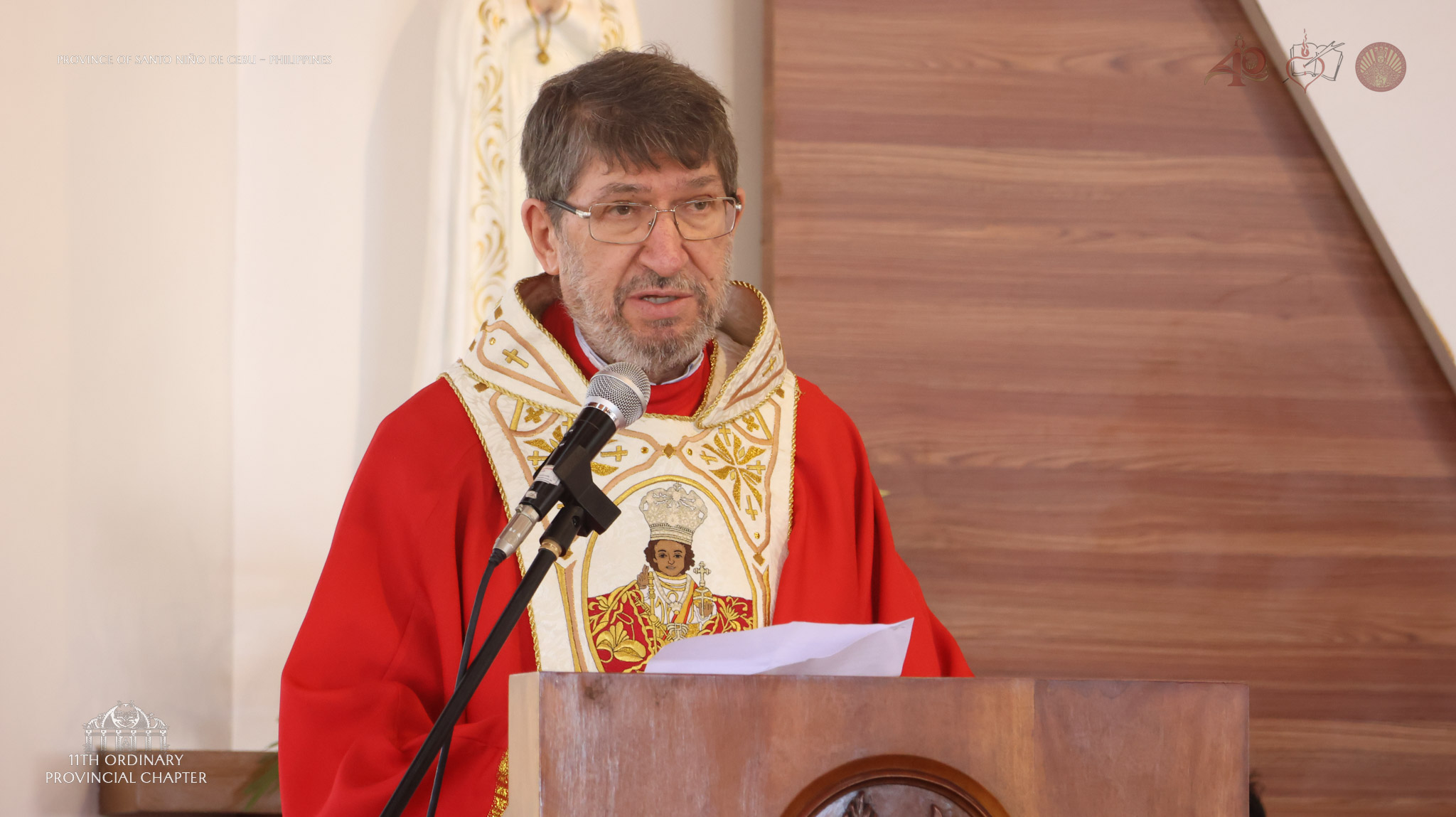When I was studying Philippine History in high school, I was given the impression that the last hundred years of the Spanish regime in the Philippines were characterized by the corruption of Spanish officials and the immorality of the friars. The image of Padre Damaso manhandling the brothers Crispin and Basilio and Padre Salvi’s lust for Maria Clara as narrated in Rizal’s Noli Me Tangere is still deeply embedded in my memory. And there was no other textbook in Philippine history that would gainsay the narrations of Gregorio Zaide. The anti-Spanish sentiments which were still alive until the time of Corazon Aquino (remember the much maligned “blue ladies” of Malacañang) is a memorial to the influence of Zaide’s history. But there is a lot to what I learned in high school that will have to change. For the first time, I’ve seen a publication from 1899, written by a Catholic American journalist that challenges the views presented by Zaide in his Philippine History.
The article appears in a volume of Catholic World dated June 1899, scanned and submitted for viewing through a web browser at this address https://quod.lib.umich.edu/m/moajrnl/bac8387.0069.411/305:1?rgn=full+text;view=image). It is written by Bryan J. Clinch who came to the Philippines during the same year of his article’s publication.
What is so significant about the article is that he compares the situation of the Catholic Church at the time to conditions in France, and the situation of the Christianization of Philippines to that of Hawaii which was evangelized by Protestants. Apart from these, the article contains “snapshots” of the Philippines around the time when Dewey had entered the ports of Manila, Aguinaldo’s revolutionaries had created their damage among the friars and four hundred friars were awaiting their fate in the jails of the capital.
If you have studied the history of the Philippines from Rizal’s death in 1898 to the coming of the Americans, you may have wondered: what was the Philippines like? what were the sentiments of the indios towards the allegedly corrupt and immoral Fray Botod’s of their times? The article of Bryan Clinch may bring up surprises. It was written to correct misconceptions about the way Spain has been running the Philippines and as a reaction to an article about the Philippines that appeared in the New York Herald. I will be presenting here some excerpts.
I am an Augustinian friar and so I am interested in the kind of work that the friars did in the islands during the period delineated in the article. Clinch shows in this section of his article that misconceptions circulated about the priests working in the islands are mainly due to anti-Spanish sentiments. He describes to us how many priests were there working not only in the Philippines, but also in the Ladrones and Carolines at the time and then centers on the kind of work provided by the allegedly lazy friars.
The “swarms of lazy friars” that form a picturesque if rather unkindly feature of so many pen pictures of the Philippines are even more mythical than the exorbitant fees collected by them. We have already mentioned the reason why so many are found at the present moment in Manila, but the official records of both the religious orders and the government, published long before Dewey entered Manila Bay, show that in no Catholic country is the number of priests so small, compared with the population as in the Philippines. The priests are fewer than in almost any diocese in the United States compared with its Catholic population. In 1896 the whole clergy of the islands numbered nineteen hundred and eighty-eight priests between all the orders and the seculars combined. The secular clergy amounted to seven hundred and seventy-three, of whom about one-half were of the native races. These had charge of a population of over eleven hundred thousand. The archdiocese of New York last year had five hundred and ninety-seven priests for less than a million of Cathoics, St. Louis three hundred and eighty-eight for two hundred and twelve thousand and Chicago, four hundred and fifty-nine for over half a million. The secular priests of the Philippines are almost exactly in the same proportion to the population as are the priests in Chicago, which certainly is not the happy hunting ground of swarms of idle clergymen.
After this description of how small the number of the priests working in the Philippines really was in comparison to the number of the population, he then describes the kind of work they do
The whole number in the Philippines, Carolines and Ladrones was only twelve hundred and fifteen, including Jesuit and Dominican professors in the colleges, those in charge of the Manila observatory, and the missionaries among the Mohammedans of Mindanao and the heathens of the Carolines. The latter occupied a hundred and five of the hundred and sixty-seven Jesuits and the other sixty-two being in Manila in the usual scholastic work of their order. Two hundred and thirty-three Dominicans supplied the religious needs of three quarters of a million Catholics. That the task was not a nominal one is shown by the registration during the year of forty-one thousand baptisms, eight thousand marriages, and twenty-nine thousand interments with the funeral rites of the church. The Jesuits and Benedictines, besides their literary work, attended to the parish needs of nearly two hundred thousand Christians.
The Franciscans properly so-called had two hundred and forty priests in the Philippines and this two hundred forty attended to a population of over eleven hundred thousand. The Recollects had three hundred and twentyone priests for a million and a quarter of Catholics. The task of the Augustinians was the greatest of all. Three hundred and twenty-seven priests, including the superiors and the general administrative force in Manila, attended to the religious wants of two million three hundred and forty-five thousand Catholics. In the year they baptized a hundred and fifteen thousand children, buried with due rites fifty-one thousand Catholics and blessed sixteen thousand seven hundred marriages. Add to this the celebration of Mass and other public church offices for over two million Catholics, the preaching, teaching, hearing of confessions required by them, and all the other details of a Catholic parish priest, and let any discerning man say whether it was a work that left any chance for lazy self-indulgence. (p. 300)
One may ask: if the friars were these industrious and generous in their work, why the bad sentiments towards them? But were the friars really hated? Clinch gives us the report of some exiled Augustinians who passed by San Francisco. One would think that these would be embittered, but the tone of the report given is quite different.
As to the disposition of the natives of the country towards their pastors, we were assured by all the exiled Augustinians who passed through San Francisco this year that it was one of sincere attachment. Two of them, when arrested by the revolutionary emissaries in their residences, had been delivered by their parishioners, and another assured us that in nine different pueblos he had witnessed the general grief of nearly the whole population on the arrest of their spiritual guides. As he told the story, the arrest and murder of so many priests (there were over fifty put to death and more than four hundred are now captives) was the work of small revolutionary parties, backed by the power of the revolutionary government set up by the Manila Meztizos. In a way the course of events was not unlike that of the early days of the French Revolution under Jacobin rule. The capital dominated the provinces more by fear than by sympathy. The Philippine country folk are wholly unused to arms or violence. A missioner assured us that before the revolution the number of murders committed in the island of Panay, with a population of over half a million, hardly averaged one in the year. In Manila among the Chinese Mestizos it was worse, but even there the amount of public crimes was much less than in most American cities. It is easy to understand how among such a population a few armed bands, claiming to be backed by the army of Aguinaldo and the American fleet were able to pillage and slay at will. In many cases the jails were empties and the released convicts, maddened with drink, atrociously maltreated and murdered priests and religious; but these were not acts of the population at large. (p. 302)
The author also compares the kind of treatment that the Catholics in the Philippines received to that of the Hawaiians who were evangelized by Protestants. He does this within the context of an analysis of population growth in the Philippines. He says that in other countries, natives who underwent the same process as the Philippines were depopulated. He writes
In order to understand the significance of these figures (the rate of population growth in the Philippines — my note), it should be noted that nearly all the islands of the Pacific, inhabited a hundred years ago by races allied to the native of the Philippines, have been almost depopulated since the appearance of European civilization. Hawaii which received its introduction to civilization under the guidance of American ministers, as the Philippines received it from the much-maligned friars, is a striking example. When Messrs. Bingham and Thurston were entrusted with the destiny of the Hawaiian natives by the widow of Kamehameha I, their first care was to take a census of the people. It gave over a hundred and forty thousand. Sixty years of Protestant civilization and teaching had reduced the number to thirty-eight thousand, with only a couple of thousand American civilizers to take their place. In 1750, the population of the Philippines was given at nine hundred and four thousand exclusive of infants under seven. In 1896 a detailed census gave the number at nearly seven millions who had grown up under the instruction of the Spanish friars and in the Catholic morality taught by them. The Protestant missionary colony in sixty years had, by its own statement, possessed itself of nearly all the land and wealth of Hawaii and it ended its mission by rising in arms and seizing the government on that very plea. At the present moment over four hundred friars in the Philippines are lying in prison in tropical jails, liable at any moment to the death which has already come to more than fifty at the hands of fierce mobs, for the sole reason that these friars are natives of Spain. Yet writers in the American press do not blush to talk of the greed and laziness and immorality of the Spanish friars, even as a Hawaiian missionary in Honolulu reviled the memory of heroic Father Damien, and hinted at personal immorality as the reason of his death in the Molokai leper settlement.
One might, after reading the above excerpts think that the article was written by an American Catholic defending other Catholics. But it does put into a different perspective the years surrounding the events of the Philippine Revolution and its aftermath, and challenges the kind of one-sided historical education we have and continue to receive.
I also would like to add that Filipino-based undamentalists have begun to use the Noli Me Tangere to draw half-cooked Filipino Catholics into their version of the Christian religion, thereby extending — for the purposes of increased revenue for their churches — the miseducation of the Filipino. Read the article from 1899, and judge for yourselves.



